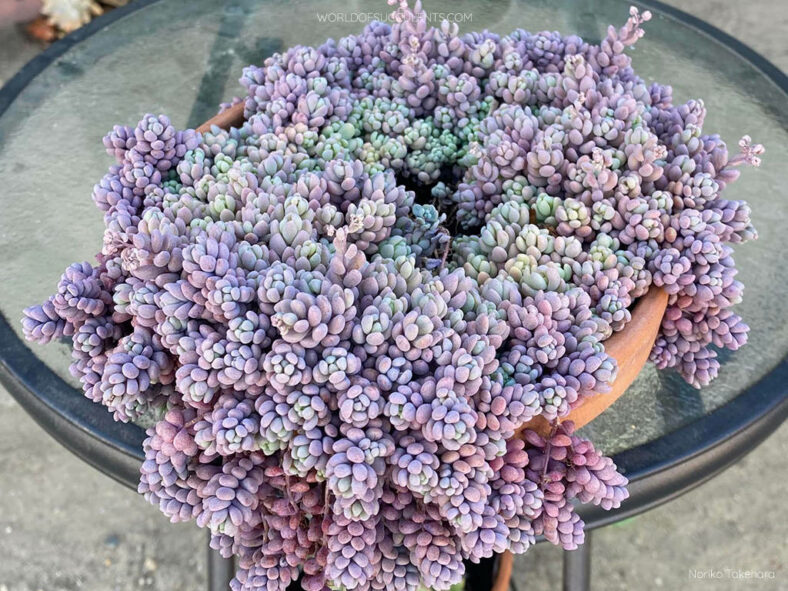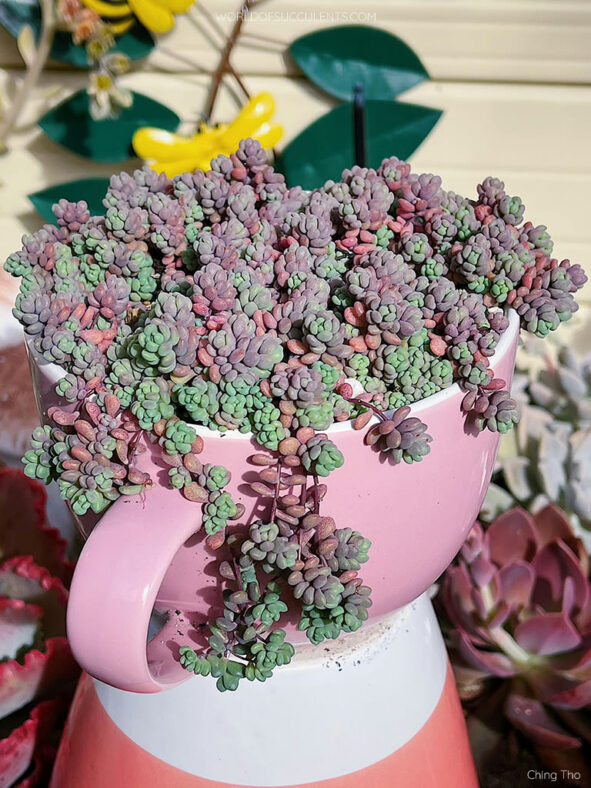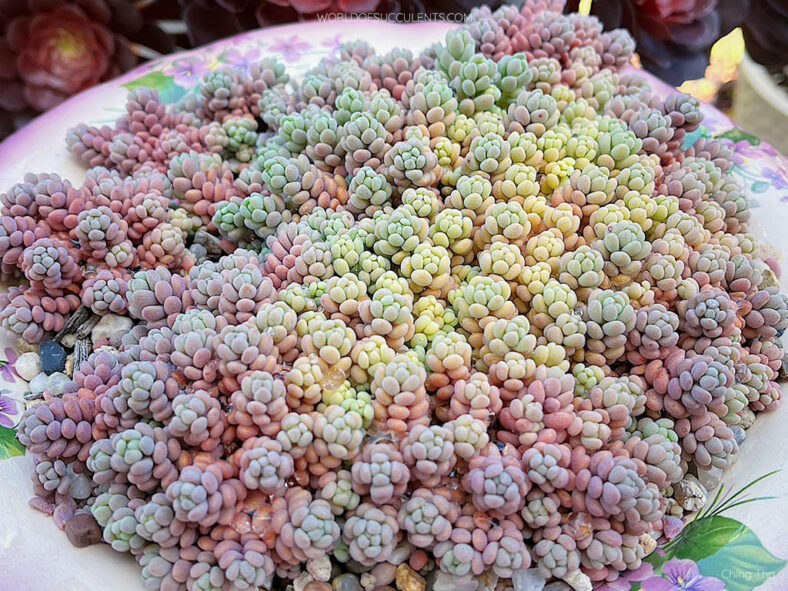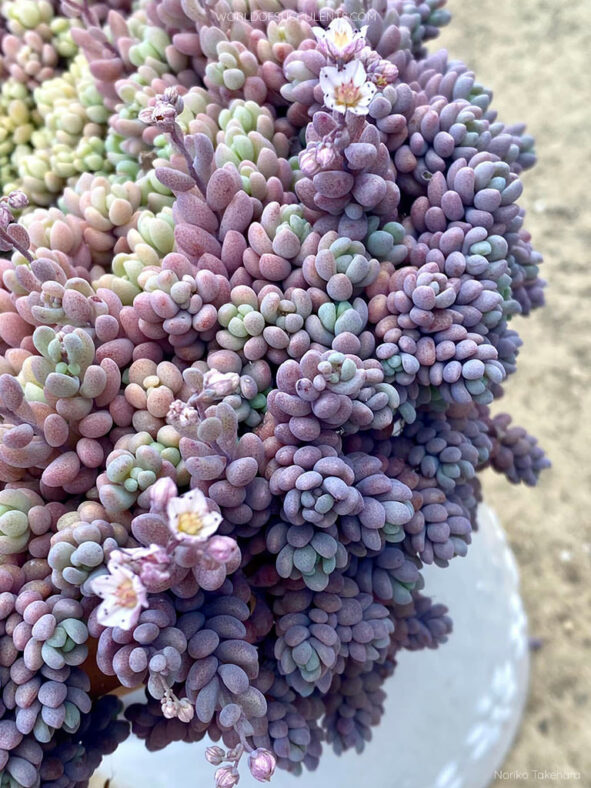Sedum dasyphyllum 'Lilac Mound' is a hardy ground cover that adds colorful accents to outdoor spaces year-round.
Scientific Name
Sedum dasyphyllum 'Lilac Mound'
Scientific Classification
Family: Crassulaceae
Subfamily: Sempervivoideae
Tribe: Sedeae
Genus: Sedum
Origin
Sedum dasyphyllum 'Lilac Mound' is a form of Sedum dasyphyllum that probably originates from the Pyrenees.
Description
Sedum dasyphyllum 'Lilac Mound' is a low-growing succulent that forms a dense carpet of tiny, colorful leaves on short stems. The leaves are bluish-green with a pink to purple hue that becomes more vibrant in full sun.
In the summer, Sedum dasyphyllum 'Lilac Mound' produces clusters of small, star-shaped, usually 5-merous flowers on short, terminal branches. The flowers are typically white, often with a red keel or pinkish.

How to Grow and Care for Sedum dasyphyllum 'Lilac Mound'
Light: Sufficient light is essential to growing a healthy plant. Sedum dasyphyllum 'Lilac Mound' grows best in locations where it enjoys the full sun for at least six hours daily but will tolerate some shade. Place the plant near a sunny window or use artificial lights when growing indoors.
Soil: This plant does not like to sit in waterlogged soil, so drainage is essential to prevent root rot. Use a commercially available mix for succulents, or create your own.
Temperature: Sedum dasyphyllum 'Lilac Mound' is well-tolerated to heat and low temperatures. It grows best in USDA Plant Hardiness Zones 4a to 9b, with average minimum winter temperatures ranging from -30 to 30 °F (-34.4 to -1.1 °C).
Watering: From spring through fall, water thoroughly and wait for the soil to dry out before watering again. During the winter, water the plant just enough to keep it from shriveling. When watering, avoid wetting the leaves, stems, and flowers.
Fertilizing: Feed a water-soluble fertilizer diluted to half the recommended strength during the growing season. However, feeding is unnecessary if you provide the plant with fresh soil annually.
Repotting: When Sedum dasyphyllum 'Lilac Mound' outgrows its current pot, repot it into a larger one during the spring. Make sure the soil is dry before you begin repotting.
Propagation: Sedum dasyphyllum 'Lilac Mound' can be propagated easily by taking leaf or stem cuttings during the growing season or by sowing seeds in spring or summer.
Learn more at How to Grow and Care for Sedum.
Toxicity of Sedum dasyphyllum 'Lilac Mound'
Sedum dasyphyllum 'Lilac Mound' is not listed as toxic for people but can be mildly toxic to pets and children.
Links
- Back to genus Sedum
- Succupedia: Browse succulents by Scientific Name, Common Name, Genus, Family, USDA Hardiness Zone, Origin, or cacti by Genus
Photo Gallery
Click on a photo to see a larger version.


